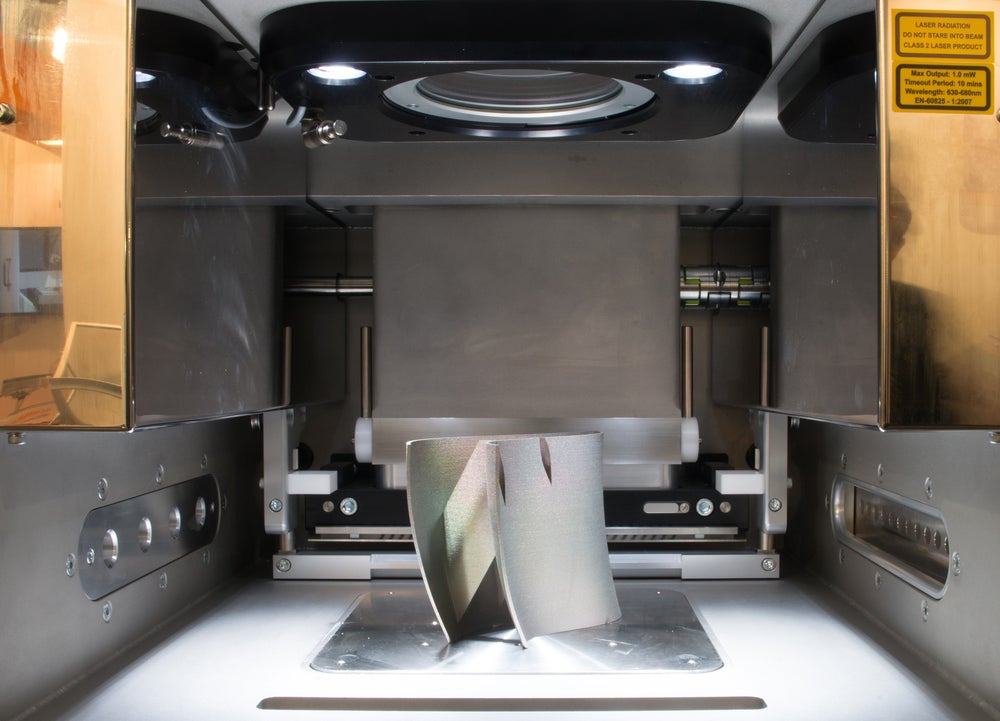February 2023 will see the tenth anniversary of the emergence of a technology that some may have heard about, but few people could easily define: 4D printing.
The adoption of 3D printing—or ‘additive manufacturing’—is now widely recognized, not least for its role in the pandemic, and going forwards, in the transformation of supply chains. But 4D printing is really an unknown quantity in terms of what we know about it, and what it could achieve. What and where is it, and what applications might we expect to see ten years on from its birth?
Early days
4D printing came to the tech public’s attention in February 2013 when Skylar Tibbits presented the concept at a TED talk. Tibbits is the founder and co-director of the Self-Assembly Lab at MIT, and Associate Professor of Design Research in the Department of Architecture.
Tibbits’ talk discussed a collaboration between Stratasys Education, research and development (R&D) departments, and the MIT Self-Assembly Lab to develop a process, which Tibbits labelled ‘4D printing’, where materials can be reprogrammed to self-assemble into new structures. At the time, he said: “The idea behind 4D printing is that you take multi-material 3D printing—so you can deposit multiple materials—and you add a new capability, which is transformation. So right off the (print) bed, the parts can transform from one shape to another shape, directly on their own. This is like robotics, without wires or motors.”
The fourth dimension in 4D printing is time, where objects become foldable on command or due to some external stimuli, which could be temperature, light, water, or other environmental triggers.
Since that talk, 4D printing has come a long way. The Self-Assembly Lab is dedicated to trying to develop programmable materials for the construction world, otherwise known as the ‘built environment.’
How well do you really know your competitors?
Access the most comprehensive Company Profiles on the market, powered by GlobalData. Save hours of research. Gain competitive edge.

Thank you!
Your download email will arrive shortly
Not ready to buy yet? Download a free sample
We are confident about the unique quality of our Company Profiles. However, we want you to make the most beneficial decision for your business, so we offer a free sample that you can download by submitting the below form
By GlobalDataTaming the too-harsh environment
Areas that have “fairly near-term applications”, as Tibbits described it in 2013, are extreme environments, scenarios where it is difficult to build, or where current construction techniques do not work. The environments are too harsh, too large, too dangerous, it is expensive, and there are too many parts. An obvious example would be space. The US National Aeronautics and Space Administration (Nasa) has looked at 4D printing to develop a wire mesh structure created from steel pieces, which incorporates thermal regulation programming. The structure would have the capability to reflect heat from the outside and preserve it from the inside. Potential uses could be the manufacture of space suits or putting coating materials on spaceships.
Self-assembly furniture
Other examples of 4D printing are self-repair piping and self-assembly furniture. In self-repair piping, the pipes of a plumbing system could dynamically change their diameter in response to the flow rate and water demand. The pipes could even possibly repair themselves automatically if they crack or burst, thanks to their ability to change in response to the environment’s change. In self-assembly furniture, 4D printing could allow the printing of a flat board that will curl itself up into a chair by just adding water or light to it. If IKEA is not investing in the idea, there are likely millions of people who have struggled with flatpack furniture that wish it was.
Another potential application is the medical world where 4D printing could be used in the designing of stents. Programmed stents would move through the human body, and when they reach their destination, open up and act like scaffolding to help keep arteries open. Even though the ten-year anniversary of the start of 4D printing is fast-approaching, the idea and applications so far have only scratched the surface of the myriad possibilities. We can expect the formal tenth anniversary of the genesis of 4D printing to drive new ideas and applications, no doubt in a self-transforming TED talk!








